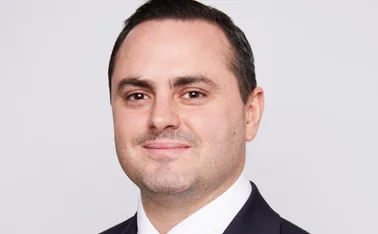
In-depth: Call a specialist

In a highly competitive market one way brokers can differentiate themselves is by targeting specialist lines. Here Markel tackles the biomedical and life sciences industry while the Insurance Age team examines the specialist markets of directors & officers, business interruption, cyber and engineering, and learns how brokers can build profitable propositions
Delving into D&O
There are opportunities for brokers in D&O, despite the soft and competitive market, reports Siân Barton
Brokers have been warned to place their directors and officers (D&O) business carefully in what remains a highly competitive and softening marketplace.
David Ritchie, executive director of D&O at Arthur J Gallagher, predicted that some of the underwriters currently active in this area would be forced out of the market over the next five years and urged brokers to place business studiously in order to prevent having to work with underwriters who have scrapped their D&O divisions in the future.
“You don’t want to negotiate claims with any underwriter who does not do it anymore. Brokers should use underwriters who have long experience in the market and have been there, done it, and got the t-shirt,” he insists.
According to the brokers and insurers Insurance Age spoke to the market is continuing to soften due to the high level of competition within the sector.
“I would not say that they [insurers] are profiting at the moment,” says Callum Taylor, head of management liability at Axa. “The market remains competitive. It has evolved over the last 10 years to cover individuals and the company.”
Ritchie says many D&O markets are “water-logged” with some insurers operating small books at £2m to £3m which won’t be able to sustain even one claim hit. He doesn’t believe all of these insurers will remain in the market over the next five years and adds “it will be interesting to see who is still standing”.
So, this savage environment means premiums are cheap and often underpriced. Marie Voysey, FI/D&O manager at MGB Insurance Brokers, comments: “There are still some cheap premiums and it isn’t turning into a harder market.”
Ritchie agreed premiums are “too cheap”. He adds: “There is insurance pressure on brokers to reduce commissions and fees. Some underwriters are making money [from D&O] but they are not making much.”
This is not to say there are no opportunities for brokers or insurers in this area. Taylor points out that there is still room for growth – particularly in the newer area of SME D&O.
“We are seeing increased penetration in D&O,” he explains. “We’re at about 20% and there are a lot of basic policies. Less than one in five will have appropriate cover in the event of a claim. Companies are at least twice as likely to have a claim in D&O than a property claim.”
According to Chubb’s Neil McCarthy, UK and Ireland manager for executive protection, 70% of people who should have D&O do not have it. “That’s our biggest competitor, how do we get into that space?” he asks. To attract more customers Chubb is developing policies comprising D&O management liabilities and additional covers such as kidnap cover.
Brokers can also offer additional services in this area, rather than simple policy provision. “Brokers can help their clients have a policy in place with guidance from the initial stages,” says Voysey. “They can offer oversight of the whole process, guidance, and legal advice as ways of adding value.”
This level of bespoke advice and guidance throughout the policy set-up process can be valuable to clients Voysey points out. However, the sector does have its challenges, she adds: “Brokers are struggling to get a policy through a portal. It’s complex to get a policy and a basic, standard policy is not always the right way to go.”
Axa is also working to develop additional services in this area, offering risk management and legal advice in order to help clients to reduce their exposure to risk.
Taylor concludes: “An in-tune broker will wish to ensure the client is fully protected but they can also deliver a threefold profit from existing customers – it’s all about education, educating client and educating staff. Being aware of the best product for the customer and doing what they can to keep the customer out of trouble in the first place.”
Adding value
Business interruption insurance is an area where brokers can still add real value, Siân Barton discovers
Business interruption is the “single largest area of underinsurance” according to Angus Tucker, of loss adjuster Lorega.
It’s a thorny issue for brokers who can find themselves at the sharp end if they do not give the right advice. Jonathan Samuelson, partner at loss assessor Harris Balcombe, warns: “Some brokers do not understand it and some brokers do not explain it. That leaves them open to be sued when a policy holder has a claim fail.”
He also points out that the impact of businesses failing to get this type of cover at all, or failing to get the right cover can be grave. Quite simply they can “go bust”.
Catherine Dixon, head of commercial property at Allianz explains that nowadays “most have some sort of business interruption plan but the issue is they do not always have sufficient cover”.
The main issues that cause people to be underinsured surround indemnity periods and miscalculations of gross profit. “There are very few circumstances where a 12-month indemnity period is adequate,” Tucker insists. “You need at least 24 months. I have dealt with claims with three to six-months indemnity.”
Some in the sector have suggested a ban on offering periods shorter than a year for indemnity for this type of policy. However, Dixon, despite pointing out that people “underestimate how long it takes to get a business back up and running” following a catastrophe, is dead against this notion. “Getting rid of 12-month periods restricts choice,” she says. “It isn’t up to us [insurers] to restrict indemnity… I think it’s about people buying the right cover for their business.”
Incorrect projections on gross profit also impact because there are a number of definitions, for example, accountancy gross profit does not include wages – how is a client supposed to pay their staff if the policy doesn’t cover salaries? Tucker recommends using insurable gross profit when building a policy in order to prevent this.
All in all this means there are opportunities for brokers. Nicholas Hartley, property and casualty underwriting manager at Sterling, agrees that “it’s a chance for them [brokers] to prove their value”. He explains that in an increasingly e-traded world, for the more complex policies, such as business interruption, where a face-to-face discussion is required “brokers need to show they can offer real added value”. He says it is of “vital importance” for insurers to work with brokers to help them to understand and be able to explain the policy to clients.
Dixon adds: “If a broker gets a client with a 12-month indemnity period it is an area where there is a massive upsell opportunity.”
Vincent Gardner, managing director of Finch Commercial Insurance Brokers, agrees there are opportunities but explains that the hardest thing about selling business interruption insurance, indeed the hardest thing about being an insurance broker, is getting in front of clients.
Once the broker is with a potential client, the key is to ensure that they have enough training and knowledge about business interruption and can explain a policy clearly. Clients value this, Gardner insists, and he says that, often, once a client has had the risk exposure of not buying the correct policy explained to them they are happy to pay more for different cover. “By understanding it and advising on it, which some other brokers do not, that enables us to own clients because we have the right business interruption knowledge,” he adds.
Gardner advises that at Finch Commercial they hold regular lunch and learn sessions where experienced staff explain real cases they have dealt with, alongside e-training and industry qualifications, to help their colleagues understand business interruption. Samuelson suggests brokers minute meetings and record advice to ensure they are “bullet-proof” in the event of a claim.
Insurers, brokers and loss adjusters agree that broker education is the best way of preventing underinsurance and disputed claims. “You need specialist training to develop expertise and understand business interruption cover… when you get a broker who understands they make sure the cover is correct,” Tucker concludes.
Rise of the cyber brokers
Cyber insurance is a fast-growing market and one that many brokers are looking to enter, writes Ida Axling
Cyber insurance is a growing market in the UK and according to both insurers and brokers it will keep on expanding.
Policies are designed to put businesses back on track if they suffer financial loss or damage due to, for example, hacking attacks or cyber extortion.
New products are frequently launched and with many insurers having specific cyber divisions, it’s clearly an area where people want to get involved.
Stephen Wares, cyber risk practice leader at Marsh, says: “It’s a fascinating area of risk and I think the long-term prospects are extremely good. Cyber insurance adds real value to the insurance industry.”
 New data protection regulation currently being worked on by lawmakers in Europe would mean that more companies will be obliged to notify their customers if they experience a security breach.
New data protection regulation currently being worked on by lawmakers in Europe would mean that more companies will be obliged to notify their customers if they experience a security breach.
Matthew Webb, head of technology at Hiscox, predicts that this new legislation will drive demand for insurance, adding that he also thinks that “continued advances in technology and media awareness will increase demand”.
According to Gareth Tungatt, CUO of Ascent Underwriting, cyber is “a central market” which will continue to expand as an increasing amount of businesses will need cyber cover in the future.
“We’ve been involved in cyber for 10 years and most of our business comes from that area,” he says.
With rapidly evolving technology, brokers and insurers agree that cyber is a field where it can be challenging to keep up with developments.
Rachel Phillips, business development and proposition director of Bluefin’s corporate division, stresses the importance of being proactive and trying to stay abreast of issues, adding that “if you just wait for the information to come to you, you will quickly fall behind”.
Novae head of cyber, Dan Trueman, adds: “It’s important to understand development. But in reality it’s like every other insurance product, we need to review the risks and be capable of responding when there are breaches.”
Cyber insurance can, according to Phillips, be a hassle for brokers, who are generally uncomfortable with these types of products.
“One of the key issues is that there is a lack of confidence amongst brokers in talking about cyber insurance,” she says. “What does it actually mean? To what extent are companies actually exposed to cyber risk? I think many organisations are narrow in their view about cyber risk.”
However, Lee Davey, regional managing director at Jelf Group, adds that he thinks “chartered brokers will keep up with the changes in the market because it’s close to them”.
The most common view among brokers is that the key thing for them is not necessarily to sell cyber insurance products, but to broaden their clients’ understanding of what risks they are exposed to.
“There is a growing element to what we do,” Davey says. “Many of the smaller companies are naïve and unaware of the risks to their businesses because they think cyber-attacks only happen to bigger businesses, but the truth is it can happen to any company at any time.”
Another issue raised regarding cyber insurance is whether insurers can actually pay out in the event of a major breach across the UK. The general opinion among brokers seems to be that they most likely can, but that it depends on the type of breach.
A problem that comes hand-in-hand with the rapidly evolving technology is that there is difficulty in defining exactly what the risks are and predicting which possible scenarios the insurance products will need to cover.
Trueman argues that insurers absolutely can pay out, adding that “the reality is that we write cyber insurance with strongly modelled risks and we’ve been doing it for a while”.
However, Wares concludes: “It’s a challenge-posed industry and there’s not enough data to answer whether insurers can pay out in a major breach. We need more detail around the different scenarios.”

Building for the future
The upswing in the construction industry’s fortunes present an opportunity for brokers, says Larry Ferguson
A look across the skyline of some UK cities seems to provide evidence of a resurgence in the construction industry.
The sector appears to be benefitting from an improving economy although the outlook is still uncertain.
But if there is a revival in the industry does it encompass wide-ranging developments nationwide or just big-ticket projects in the South East? And how can brokers benefit from an across-the-board upswing if that is taking place?
Paul Brown, director of Derby-based Franklands Insurance & Risk Management, says there is a recovery taking place following the economic downturn and it is not just restricted to massive projects.
“It is certainly happening in the South East, and we are seeing growth and activity in the Midlands,” he states.
According to Brown some of his firm’s clients have benefitted from schools projects.
Stephen Hegarty, construction manager at BJP Insurance Brokers, remarks: “We’re definitely seeing signs of people estimating high turnover for the year going forward.”
He adds somewhat cautiously: “I think it’s the confidence that’s more tangible than the actual figures.”
However, in Hegarty’s opinion there is more commercial as opposed to residential work and the upturn is being driven by cities.
Nick Newlove, UK construction director at RSA Group, is not of the view that the turnaround is in anyway a boom but does see definite growth in activity.
He cites government analysis which showed that the average annual spend on infrastructure projects in the UK from 2005 to 2010 was £41bn, and in 2011 to 2013 the figure was £45bn.
“We are seeing a sizeable increase in planned infrastructure that’s wider than just projects like Crossrail,” Newlove continues.
In addition he references areas like energy and transport where activity is taking place, and the process of trying to get things moving in the Thames Gateway.
On the question of how brokers can capitalise on growth, Brown has some straightforward advice.
“You certainly have to stay close to your clients and find out what they are up to, keep up with growth and get the message out to construction companies that you have some level of expertise and you’re available to help,” he says.
That view is echoed by Nick Houghton, managing director at JM Glendinning. He recommends brokers are proactive in securing new contracts : “We go to our customers in the field and say we see an upturn in their industry – we ask ‘are your insurance needs covered?’”
Understanding a client’s business is absolutely fundamental for the next step of assessing what propositions and services are needed to ensure customers are properly protected, says Houghton.
He reflects that in his experience brokers sometimes do not ask enough questions so as to ensure a product is tailored to the risk being taken – especially when a client is taking on a contract in a different area to their traditional core expertise.
As Bob Pybus, director of NPA Insurance points out, there are a variety of good products available in the market covering the likes of structure, plant, engineering and employers’ liability.
But as a rule he does not think brokers in general are properly equipped to advise on the complex end of the construction and engineering market.
“Without some good product knowledge and some experience in dealing with clients involved in construction it would be unwise to try to enter the market,” Pybus warns.
“There are plenty of contractual pitfalls to overcome and a wide variety of terms and conditions to compare.”
Brown appears to agree when he says you cannot put experience in overnight and that it comes over a long period of time. “There’s no silver bullet,” he declares.

Biomedical and life sciences:
An opportunity for brokers
The biomedical and life sciences industry is a growing sector offering a wide range of opportunities to the broking community. It’s SME driven and very diverse; and it’s not just London and the South East, it includes Scotland, South Wales and North West England, says Simon Webster
The UK government has recognised the role of SMEs in life sciences and is working to build a life sciences ecosystem, with the aim to create a more collaborative market. These ecosystems are needed to attract and develop talent – young scientists need to be encouraged and economic incentives need to be brought in. There’s an opportunity for brokers here.
 The UK government’s latest report on the state of the life sciences industry in the UK certainly stresses the potential – and the numbers – involved. Entitled Strength and Opportunity 2013, the annual report points out that: “The life sciences sector in the UK consists of 4,980 companies developing, producing and marketing products and services in the pharmaceutical, medical technology, medical biotechnology and industrial biotechnology markets. These markets have historical strong growth rates and forecast rates are 8-10% per annum. Life science companies based and operating in the UK generate £52bn in turnover from sales into the UK and overseas and this represents approximately 6% of the world market sales.”
The UK government’s latest report on the state of the life sciences industry in the UK certainly stresses the potential – and the numbers – involved. Entitled Strength and Opportunity 2013, the annual report points out that: “The life sciences sector in the UK consists of 4,980 companies developing, producing and marketing products and services in the pharmaceutical, medical technology, medical biotechnology and industrial biotechnology markets. These markets have historical strong growth rates and forecast rates are 8-10% per annum. Life science companies based and operating in the UK generate £52bn in turnover from sales into the UK and overseas and this represents approximately 6% of the world market sales.”
Large sector
The report also breaks down the number of companies in this sector, according to the database that it has created – it states that there are 3,309 medical technology companies, 1,073 medical biotechnology companies, 477 pharmaceutical companies and finally 121 that are involved in industrial biotechnology. However, when it comes to turnover, pharmaceutical companies have the lion’s share, totalling £29.3bn, followed by medical technology (£17.6bn), medical biotechnology (£4.2bn) and then industrial biotechnology (£0.6bn).
 Economic activity in the life science industry is spread throughout the UK, although there are geographical concentrations. Pharmaceutical and medical biotechnology sites and their associated employment are concentrated in the south and east of England, including London, along with the North West of England and Scotland. The medical technology sector is more widely distributed.
Economic activity in the life science industry is spread throughout the UK, although there are geographical concentrations. Pharmaceutical and medical biotechnology sites and their associated employment are concentrated in the south and east of England, including London, along with the North West of England and Scotland. The medical technology sector is more widely distributed.
In addition, there are a large number of other companies linked to the life sciences sector. The government report adds: “All sectors, particularly the pharmaceutical and medical biotechnology sectors, outsource a significant proportion of activity to large supply chain networks. The specialist suppliers and services sector is therefore integral to the overall life science industry. Across all the lifesciences sectors in the database there are an estimated 1,400 companies that supply services, for example clinical trials management, assay development, regulatory advice, design expertise and products such as reagents and specialist equipment. Companies in the database carrying out this activity employed an estimated 31,800 staff and generated a turnover of £6.3bn in 2012-2013.”
Financial and professional services firm Jones Lang LaSalle (JLL) has also been looking at the UK life sciences sector. According to its 2014 Life Sciences Cluster Report: “In 2013 the UK remained the largest country in Europe with regard to life sciences turnover. The life sciences industry is one of the largest contributors to the UK’s economic growth, primarily due to its strong R&D base and large life sciences workforce. When compared with the other European countries covered in this report, the UK has the highest share of researchers as part of its full time R&D workforce.”
 In addition, JLL adds that: “SMEs can claim relief worth 25p per every pound of qualifying expenditure, one of the most generous tax breaks in the world.” JLL’s UK sector report also stated that it foresees an expansion in the UK life sciences sector over the next few years.
In addition, JLL adds that: “SMEs can claim relief worth 25p per every pound of qualifying expenditure, one of the most generous tax breaks in the world.” JLL’s UK sector report also stated that it foresees an expansion in the UK life sciences sector over the next few years.
Opportunities
The sector obviously offers many opportunities, but it’s important to stress that these opportunities are properly understood and also that the risks involved are properly assessed.
In our experience, all brokers will have at least one or two risks that would fall within our definition of biomedical and life sciences, whether that be a pharmaceutical R&D company, a medical device distributor or a contract research company. There is a historic relationship with the South East of England which is hugely important for the growth in the sector, but we actually find the majority of our business enquiries come from across the UK. There’s a lot of investment from academic institutes, NHS trusts and large pharmaceutical companies in to the commercialisation of cutting edge science and technology. This investment occurs at a very local level, presenting a growing opportunity around the UK for our brokers to invest their time in this sector. We can offer support and guidance on assessing the unique exposures faced by businesses in the biomedical and life sciences sector via our team of specialist underwriters, who operate throughout the UK.
Simon Webster is biomedical and life sciences product manager at Markel
Only users who have a paid subscription or are part of a corporate subscription are able to print or copy content.
To access these options, along with all other subscription benefits, please contact info@insuranceage.co.uk.
You are currently unable to print this content. Please contact info@insuranceage.co.uk to find out more.
You are currently unable to copy this content. Please contact info@insuranceage.co.uk to find out more.
Copyright Infopro Digital Limited. All rights reserved.
You may share this content using our article tools. Printing this content is for the sole use of the Authorised User (named subscriber), as outlined in our terms and conditions - https://www.infopro-insight.com/terms-conditions/insight-subscriptions/
If you would like to purchase additional rights please email info@insuranceage.co.uk
Copyright Infopro Digital Limited. All rights reserved.
You may share this content using our article tools. Copying this content is for the sole use of the Authorised User (named subscriber), as outlined in our terms and conditions - https://www.infopro-insight.com/terms-conditions/insight-subscriptions/
If you would like to purchase additional rights please email info@insuranceage.co.uk
Most read
- In Depth: Managing cyber risk in an ever-changing security landscape
- Covéa cuts losses but underwriting deficit grows
- JMG strikes its biggest deal of 2024 with BQI swoop









